14 Rio de Janeiro State Beaches
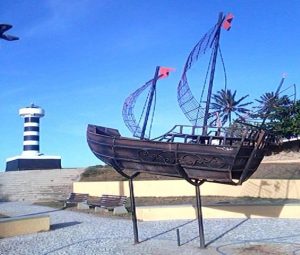 Let’s continue South looking for the channel to the Bay of Bengal, to the spice world.
Let’s continue South looking for the channel to the Bay of Bengal, to the spice world.
We have reached the beautiful city of Sao Sebastiao do Rio de Janeiro. January River. Again, Saint Sebastian is the patron of the village, now a big, famous city. Rio, however, is unpredictable. Founded in January or March?
This Portuguese caravel detected Rio, River, in January 1502. Therefore, January is related to San Sebastian the patron. Definitive settlement occurred in March of 1565. In honor of the Portuguese king Sebastian?
The Guanabara bay, Baia Semelhante a Mar, Bay Similar to Sea, was a great protection for our caravel. Some French navigators thought the same soon after our caravel left.
Should we visit the Cristo Redentor, Christ the Redeemer, or Pao de Acucar, Sugar Loaf first?
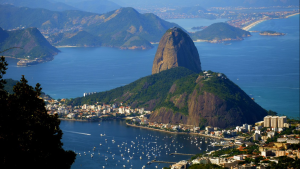 Sugar Loaf was closest to the entrance of the bay.
Sugar Loaf was closest to the entrance of the bay.
Portuguese caravels like to hide from pirates behind mountains. Caravels also like to sleep in quiet waters. Check Rio, Salvador, San Francisco, San Diego, bay cities. Early historical villages.
The Christ appears after the Copacabana and before Ipanema beaches in this narrative. Copacabana beach, world famous since the 1930’s, is South of the Sugar Loaf.
Praia da Urca, or Praia Vermelha? Transportation Boat or Red Beach?
Every hill there is called Urca. But the beach is apparently the Red Beach. just underneath Sugar Loaf rock, about 1200 ft tall.
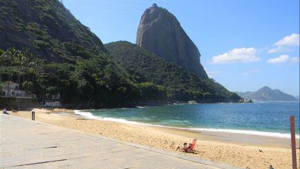 Red Beach, above, then Copacabana Beach below.
Red Beach, above, then Copacabana Beach below.
Pilgrims to Copacabana, Bolivian city of Our Lady of Copacabana, claimed that their prayer to the Saint saved their lives after a shipwreck in Rio. They named the site Copacabana (original one who looks at precious stones ?).
Copacabana Beach later became the Princesinha do Mar, the Little Princess of the Sea. A place for world championships of sand-soccer, volleyball, music festivals and New-Year fireworks.
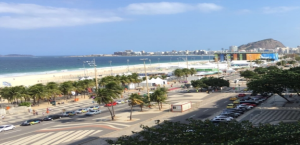 A view for an apartment rented during the 2016 Olympic Games.
A view for an apartment rented during the 2016 Olympic Games.
Let’s visit the Corcovado, Hunchback, mountain, with the Christ statue almost 2,400 feet above sea level. Wikipedia published this photo attributed to Rafael Rabello de Barros.
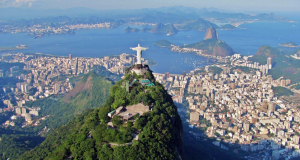 A close-up of the Christ next.
A close-up of the Christ next.
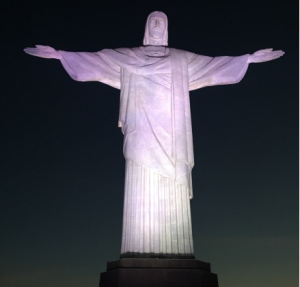 A common picture of the Christ taken by visitors like us.
A common picture of the Christ taken by visitors like us.
Local story says that the pieces of rock came from France. Then the statue was built in Rio de Janeiro between 1922 and 1931 (check Wikipedia for details).
The sunset seen from the Christ can be impressive.
 Ipanema started as a Turbid Water beach; The Girl from Ipanema, the internationally famous bossa nova – jazz song, changed such concept dramatically. The Lagoa, Lake, seen between the Christ and Ipanema, was pictured day and night by friends during the 2016 Olympic games.
Ipanema started as a Turbid Water beach; The Girl from Ipanema, the internationally famous bossa nova – jazz song, changed such concept dramatically. The Lagoa, Lake, seen between the Christ and Ipanema, was pictured day and night by friends during the 2016 Olympic games.
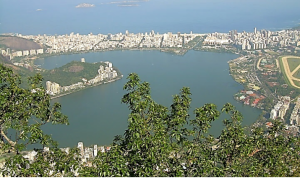
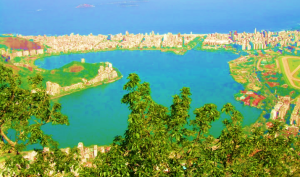
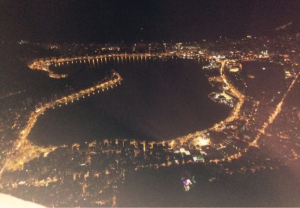 The Lake is impressive, day and night.
The Lake is impressive, day and night.
Famous Ipanema beach North of Leblon beach far away and South of Arpoador surfing waves. The real Girl from Ipanema walked past near the center of Ipanema beach.
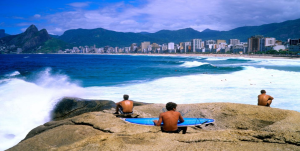
 Sunset, time to move on. Next, Prainha Beach, Little Beach, environmentally protected beach South of Rio.
Sunset, time to move on. Next, Prainha Beach, Little Beach, environmentally protected beach South of Rio.
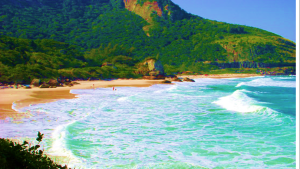
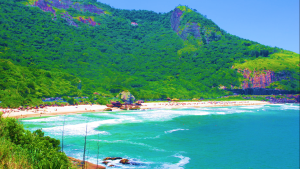 Environmentally protected area. No houses, no constructions. Only great surfers. Women and men surfers. Many international competitors trained at this beach, many great surfers grew up at Prainha.
Environmentally protected area. No houses, no constructions. Only great surfers. Women and men surfers. Many international competitors trained at this beach, many great surfers grew up at Prainha.
We finally reach a restaurant after going South through environmentally protected beaches. The restaurant is on top of the hill between Praia de Grumari, cassia tree, and Guaratiba, lugar de garças, heron place, in the South.
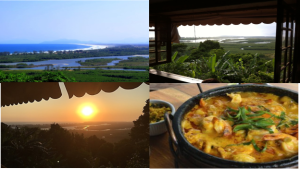 The sunset view from the restaurant.
The sunset view from the restaurant.
 One can have dinner overlooking the sunset. A huge swamp surrounds a river/channel going to the Atlantic Ocean.
One can have dinner overlooking the sunset. A huge swamp surrounds a river/channel going to the Atlantic Ocean.
Does this sunset represent the end, the end of the chapter, or a hint that a new chapter somewhere else is coming along?
